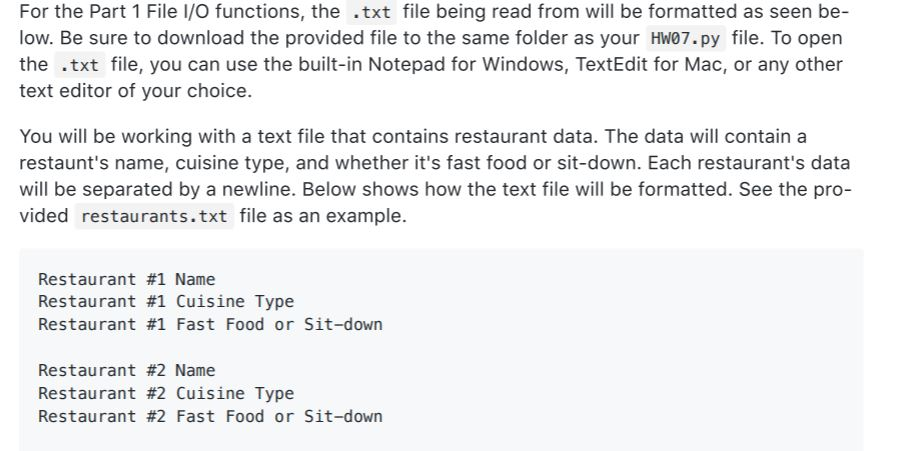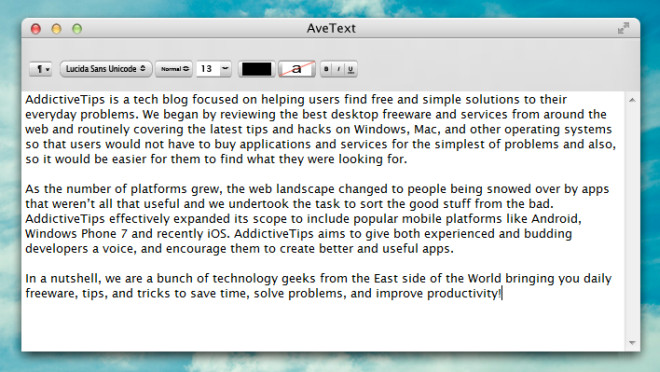

- #Windows vs mac text file newline textedit mac os x
- #Windows vs mac text file newline textedit mac os
- #Windows vs mac text file newline textedit code
#Windows vs mac text file newline textedit code
It provides an extensive set of features to help you in the coding process, such as support for syntax highlighting, snippets, code refactoring, debugging, intelligent code completion (or autocomplete), and Git integration. Talking about functionality, you can use VS Code to write programs in various languages: C/C++, Java, Python, JavaScript, and Go. One aspect of VS Code that separates it from other source-code editors is that, instead of using a project-based system, it allows you to work with multiple directories and isolate them into different workspaces - kind of like a language-agnostic code editor. It is built on the Electron framework and is compatible with all major operating systems: Linux, macOS, and Windows. Visual Studio Code or VS Code is a freeware source- code editor from Microsoft. With that out of the way, here are the best text editors for Mac. For, even though you can do it, the lack of development-specific features on a basic text editor might not offer as good an experience as a source- code editor or an IDE ( integrated development environment). For instance, a source- code editor gives you syntax highlighting, autocomplete, indentation, and bracket matching, among other features, which you do not get to see on a basic text editor.Īs such, you can use a source- code editor for general document writing and editing, but it is not wise to use a basic editor for writing code. While text editors offer functionalities that solely focus on simplifying creating and editing documents, source-code editors provide additional features to speed up the code writing process. The difference between both kinds, at large, lies in the functionality and purpose that they serve. Text editors come in various forms, but you can broadly classify them as basic text editors (plain text or rich text) and source-code editors.
:max_bytes(150000):strip_icc()/002-gedit-linux-command-unix-command-4097153-fbd7ac6d2cbb4bf98263167ea819ab50.jpg)
#Windows vs mac text file newline textedit mac os
Modes="unix2dos dos2unix todos tounix tomac"Įcho "NOTE: The tomac mode is intended for old Mac OS versions and should not be"Įcho "The file is modified in-place so there is no output filename."Įcho "The script does try to check if it's a binary or text file for sanity, but"Įcho "Symbolic links to this script may use the above names and be recognized as" # = The script does use the file command to test if it is a text file or not, # = can be omitted - it is inferred from the script name.

# = If SCRIPT is one of the modes (with or without. # = MODE is one of unix2dos, dos2unix, tounix, todos, tomac
#Windows vs mac text file newline textedit mac os x
The following is a complete script based on the above answers along with sanity checking and works on Mac OS X and should work on other Linux / Unix systems as well (although this has not been tested). You can either run unix2dos on your DOS/Windows machine using cygwin or on your Mac using MacPorts. Mac OS X is Unix based and has the same line endings as Unix. In Mac text files, prior to Mac OS X, line endings exist out of a In Unix text files lineĮndings exists out of a single Newline character which is equal to a DOS Line Feed (LF) character.

In DOS/Windows text files line endings exist out of a combination of two characters: a Carriage Return (CR) followed by a Line Feed (LF). Regular files, such as soft links, are automatically skipped, unless conversion is forced.ĭos2unix has a few conversion modes similar to dos2unix under SunOS/Solaris. The Dos2unix package includes utilities "dos2unix" and "unix2dos" to convert plain text files in DOS or MAC format to UNIX format and vice versa. You probably want unix2dos: $ man unix2dosĭos2unix - DOS/MAC to UNIX and vice versa text file format converterĭos2unix


 0 kommentar(er)
0 kommentar(er)
